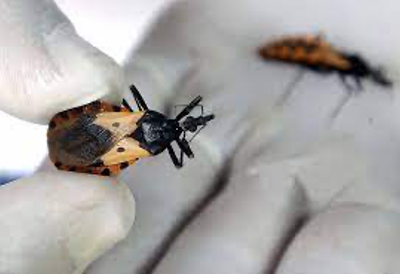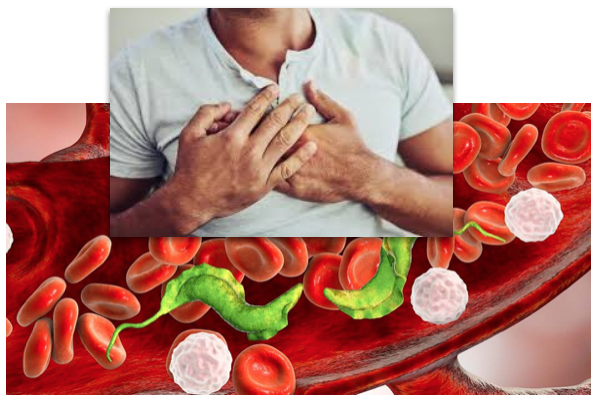CommentsWELLNESS - Now that Covid has heightened awareness of disease and how infections play out differently across disparate populations, this is about an ignored health crisis that emphasizes the divide between East and West LA.
Between income-challenged Latinx families and a mostly wealthy, mostly white, mostly health-insured population whose perspective shapes most news narratives.
Pretty much everyone has heard about Muscular Dystrophy, Cystic Fibrosis, Hemophilia, ALS (Lou Gehrig’s disease) and Leukemia, but how many of us know about Chagas?
Across the United States, Muscular Dystrophy affects 1 in every 7,250 males from ages 5 to 24, so about 5,500. Between 30,000 and 35,000 Americans suffer from each of ALS, Hemophilia and Cystic Fibrosis.
The World Health Organization has identified 18 diseases as neglected infectious diseases. These primarily impact the poor in the global South so don’t receive the publicity of infections that affect the wealthy and white northern countries. However, some are also prevalent in low-income populations in wealthy countries.
Chagas is one of the WHO’s overlooked diseases. Because not everyone with the disease is symptomatic there are only estimates of how many Americans carry the parasite – probably over 300,000 across the country and in excess of 30,000 in Los Angeles County.
Or about 124 out of every 10,000 people born in Latin America and now living in Southern California.
Of the estimated seventy to one hundred thousand Californians who are infected, less than one percent are aware they have Chagas including as many as 60,000 people who have already suffered irreversible heart damage.
Every time I gave blood I checked the “No” box when asked if I had had Chagas. Otherwise, I never gave it a passing thought until I picked up The Kissing Bug, a book on Chagas in the United States written by Daisy Hernández the daughter of immigrants whose aunt died from Chagas complications.
Chagas is not a disease that can be transmitted from person-to-person like a cold or the flu, or through casual contact with infected people or animals. Primary transmission occurs when the eponymous bug bites and while sucking its hosts’ blood defecates.
In its feces lives a parasite which when the victim rubs the bite, can be introduced through the broken skin or even through the mucous membranes of their eyes or mouth.
Most people in the Los Angeles area with the disease were infected while living in or visiting Latin America – the kissing bugs that carry Chagas are endemic to Mexico, and Central and South America – but there is documented evidence of local transmission in several states including Texas and Missouri.

While studies showing such transmission have not been carried out in California, kissing bugs that can transmit the disease are native to our state, and the infection has likely existed here for thousands of years. Chagas is a zoonotic organism and doesn’t care if its host is human, dog or chicken so long as their blood is warm. The parasite has been found in a number of raccoons in Griffith Park.
Under the microscope the one-celled organism can take on various manifestations from a lavender lozenge to what looks like an eel with a Mohawk.
Often it is not even visible in the blood stream making it difficult to identify because it has moved into other tissue, the most common being the heart muscle where it can cause extensive scarring and eventual death, or into the gastrointestinal tract where it can eat away the lining leading to the collapse of parts of the esophagus, intestine or colon.
It affects people who grew up in or even visited poorer rural areas of Latin America (and, more rarely, in our southern states) where local housing had cracks and crannies in which these bugs can hide, did not have insect-proof windows, walls and roofs, were not regularly treated with insecticides, and where insect repellant and bed nets weren’t in widespread use.
Though increasing prosperity and public health efforts across the Americas have reduced transmission from the kissing bug itself, infection can also result from blood transfusions, organ transplants and even from eating uncooked food.
But the greatest risk to the next generation of Angelenos is probably in utero. The LA County public health website notes that the parasite is transmitted in three to eight percent of pregnancies of infected women.
An asymptomatic infected mother can transmit the parasite through the placenta to her daughter who can also be asymptomatic but whose children may develop the disease.
Thirty to forty percent of those infected with the parasite will eventually develop heart disease or other serious complications, often twenty years or more after they were initially infected and the annual cost nationwide is in the hundreds of millions.
Screening of all neonates when treatment can be the most effective would be a wise public health investment to prevent cardiac and gastrointestinal failure later in life. But this is a challenge in a country where profits dictate healthcare policies that emphasize intervention rather than prevention.
If Chagas is identified in a timely manner, the infection can be controlled, significantly reducing the risk of life-threatening consequences, but there is no cure.
In yet another example of abusive pharmaceutical profiteering, disgraced hedge fund manager Martin Shkreli obtained the license to manufacture one of the few anti-parasitic drugs that can be prescribed for Chagas and raised the price from $13.50 to $750 per pill.
Or about $100,000 for a course of treatment in the US as opposed to $50-$100 in South America. Non-profit activists have since ensured it is now available in generic form.
We cannot let this be just another disease of the poor, potentially fatal, whose victims will often not realize they are sick until it is too late. We cannot continue to rely on blood banks to identify those who are asymptomatic but infected.
The best approach is through early detection and LA County must recognize Chagas as the health crisis it is and take appropriate action.
We are extremely lucky that the Center of Excellence for Chagas Disease, the only organization in the United States dedicated to providing screenings and comprehensive care for people affected by Chagas, is part of the Olive View-UCLA Medical Center in Sylmar.
(Liz Amsden is an activist from Northeast Los Angeles with opinions on much of what goes on in our lives. She has written extensively on the City's budget and services as well as her many other interests and passions. In her real life she works on budgets for film and television where fiction can rarely be as strange as the truth of living in today's world.)













